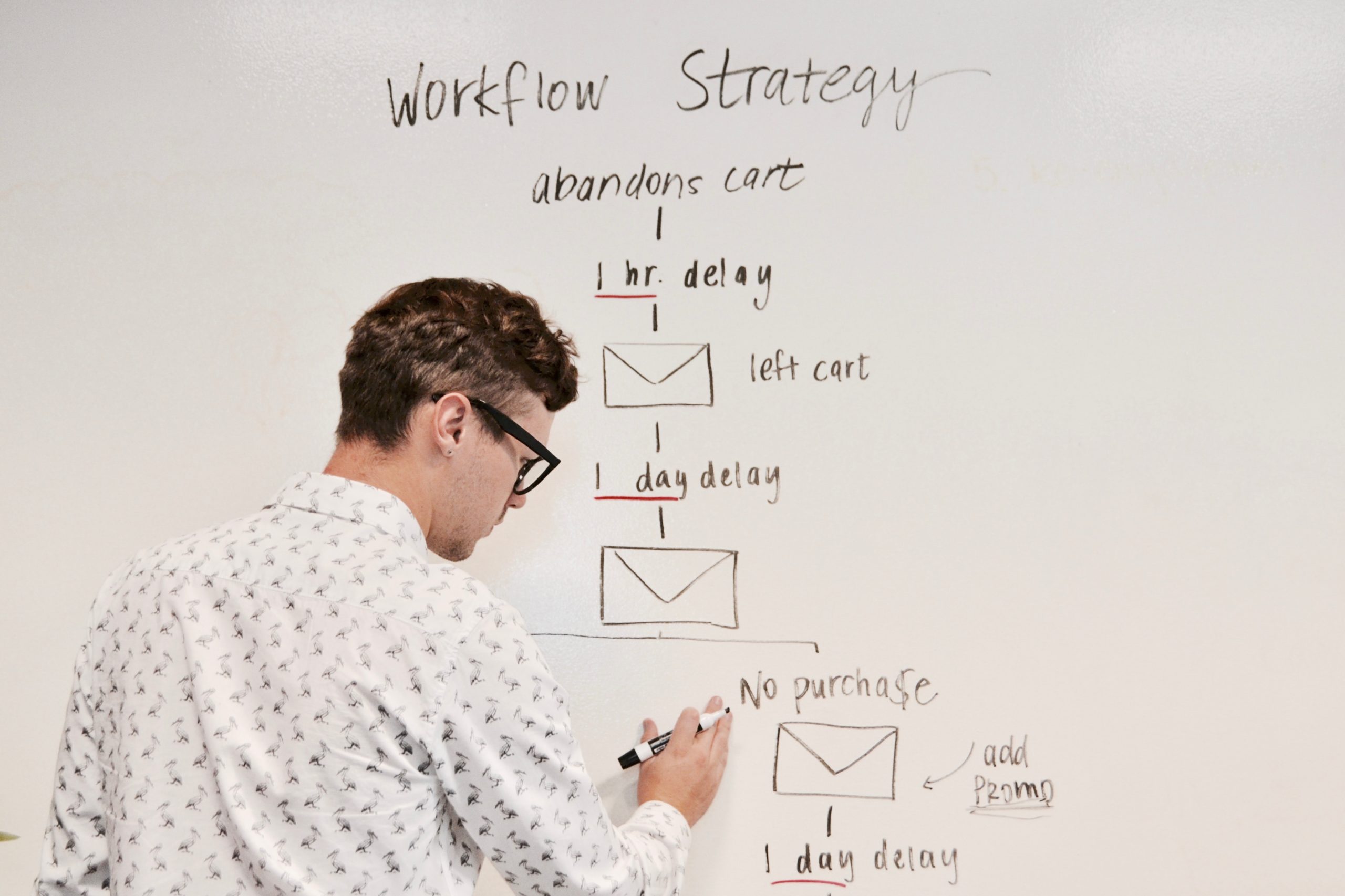4 Tips for Beginning a Website

So we all know about the great stressors of life: getting married, having kids, moving… these cause us to get stressed, not because they are bad, but because they all take an unimaginable amount of work. You have to clean up, get organized, declutter, spend unplanned amounts of money, make hard on-the-spot decisions, plan for years down the road but also keep your daily duties under control. It’s absolute chaos for months.
So how do we combat the craziness of these stressors? It comes down to good ole fashioned preparedness. It takes months of boxing up your attic, trash bag after trash bag, dusting, repainting, overall hard work. There is no better solution than effort. Working consistently for an appropriate amount of time before the project helps everything to flow smoothly and easily.
This is no different with a website. There are tons of issues that can cause stress during a build. There are things you, as a business owner, have no reason to worry about, but you will still worry about them. There are decisions that you will have to think about that you have never considered before. This is uncharted territory. Territory with wallet-ravaging monsters who want to leave you deserted and helpless (more or less). Websites seem harmless. YouTube ads make them seem so easy, almost too easy to be true. But listen. If you get a month into a web build, you will be feeling some sort of stress.
This post is a resource to help business owners be prepared. Take as much as you want. Some of this might not apply to your scenario, but some of it will.
1. Content
This is a killer for some people. If you don’t like to write, you should find someone who does. Websites are made up of words and images (yeah, super simplified). If you don’t have any words that you think can represent your company, you need to get someone to write for you. As a general practice, each page of a website should have anywhere from 300-500 words on it. You should also include relevant original content. If your website’s copy doesn’t benefit visitors with good information, your visitors will leave.
There are tons of people who are great at writing website content. You can find freelancers that are expensive but will do an incredible job, or you can let someone within your company do it. You are going to get out what you put in.
If you enter a web build with content in hand, that means your designer and developer can start sketching out your site after the first meeting. If you don’t have content when you come in to get started, be prepared to spend time working on it before you get into the fun stuff – design.
2. Images
This is a form of content but needs to be talked about separately. Photography is a huge element online. This not only affects the style of your site, but also the usability. Thankfully, there are tons of options when it comes to imagery.
If you have no budgetary constraints, design is limitless (mostly) if you have a limitless budget. Custom illustrations and professional photography are a dream for a designer to work with and can make your site look awesome.
For the rest of us though, the options usually consist of stock vs. real photography. I know this is a trigger for some designers out there, but there isn’t much of a difference. Whichever option you as the client choose, keep it consistent. If you use stock, use all stock. It is hard to make sure the quality of your own photos are edited as well as the professional photos. If the quality is inconsistent even the untrained eye can tell. We like using stock photography because it saves time and money for our clients in the end. There are great free stock photo sites like pixabay.com and unsplash.com but istock.com and other paid sites will have many more options and often better quality.
Warning to all clients: if you use real photography, this means you are responsible for taking or paying someone to take real photos of real employees around your real facility. This is a lot of work between cleaning your workspace, scheduling a photoshoot day, and finding a reliable photographer. Just be warned. This option also requires an extra week or so for your photographer to edit and prepare the photos they took. All this time adds up.
If you have all of your imagery in hand at the beginning of the project, you will be cutting the length of the project tremendously. Just make sure your images are the appropriate size and file type for the web (i.e. full screen images are usually about 2000 pixels wide). Services like tinypng.com can help you optimize your images for web.
3. Products
E-Commerce is a big deal with websites now. Online stores are everywhere. There are many benefits that can come from an online store, but there is just as much work to think about while building it.
Here are some things that we suggest you do before starting your online store.
- Get your products organized.
- Categorize them into groups.
- Name them appropriately.
- Set your prices.
- Assign product SKU#s.
- Photograph your products.
- Create a payment option account (we love Stripe).
- Choose your shipping options.
This is not an exhaustive list. There are lots of decisions that need to be made on this front, but one serious warning and suggestion to come with this. Discuss your shop primarily with your developers. The reason for this caution is, you as a business owner have great aspirations and lofty dreams for your ideal site. In your mind, everything you think of will work. The reality is, you are getting the site you are paying for. If you have a lower budget, your shop will need to be minimal. Talk to your developer to make sure what you are planning is within your project’s scope or even possible.
Structuring your shop before a project helps, but the hardest battle is not setting your expectations higher than your developer’s abilities or budget.
4. Committees
This tip is not like the others. This is not an item for your site, yet it is equally if not more important than finishing your project efficiently and with little to no hassle.
There are sayings such as: “Too many cooks spoil the soup” and “A camel is a horse designed by a committee.” These are both so true for websites. Too many opinions on design and development kill a project. Everyone is a critic.
We like when clients have one person as the leader and point man for communication. This allows for profitable conversations and constructive criticism throughout the project. There are definitely times for larger scale feedback, but we find that the length of a project is related to the number of people who are needed to approve a decision.
If you are starting a website build, think about whether or not certain people or even departments within your company should have a say in a decision. You want to be efficient with your time and your money, so don’t let personal opinions hinder your goals.
Before you start panicking about all the work to be done, know that this is a great step for your business. A website is a sign of legitimacy today. You are about to be a higher functioning business because of the project you are working on. This is a great thing. Also, know that web designers and developers are on your side. They want you to succeed and do well. We are all on the same team. We are professionals that are working to help you reach your goals.
There are a ton of other things not in this post that you will need to consider before beginning your project, but these are really big ones. This post is just to get you to think about the work ahead, but also think about who your team is. We at GruffyGoat are a full-service web studio which means we do it all for you. If you are interested in learning more about us, follow the links below and follow us. We would love to help with your next project.

